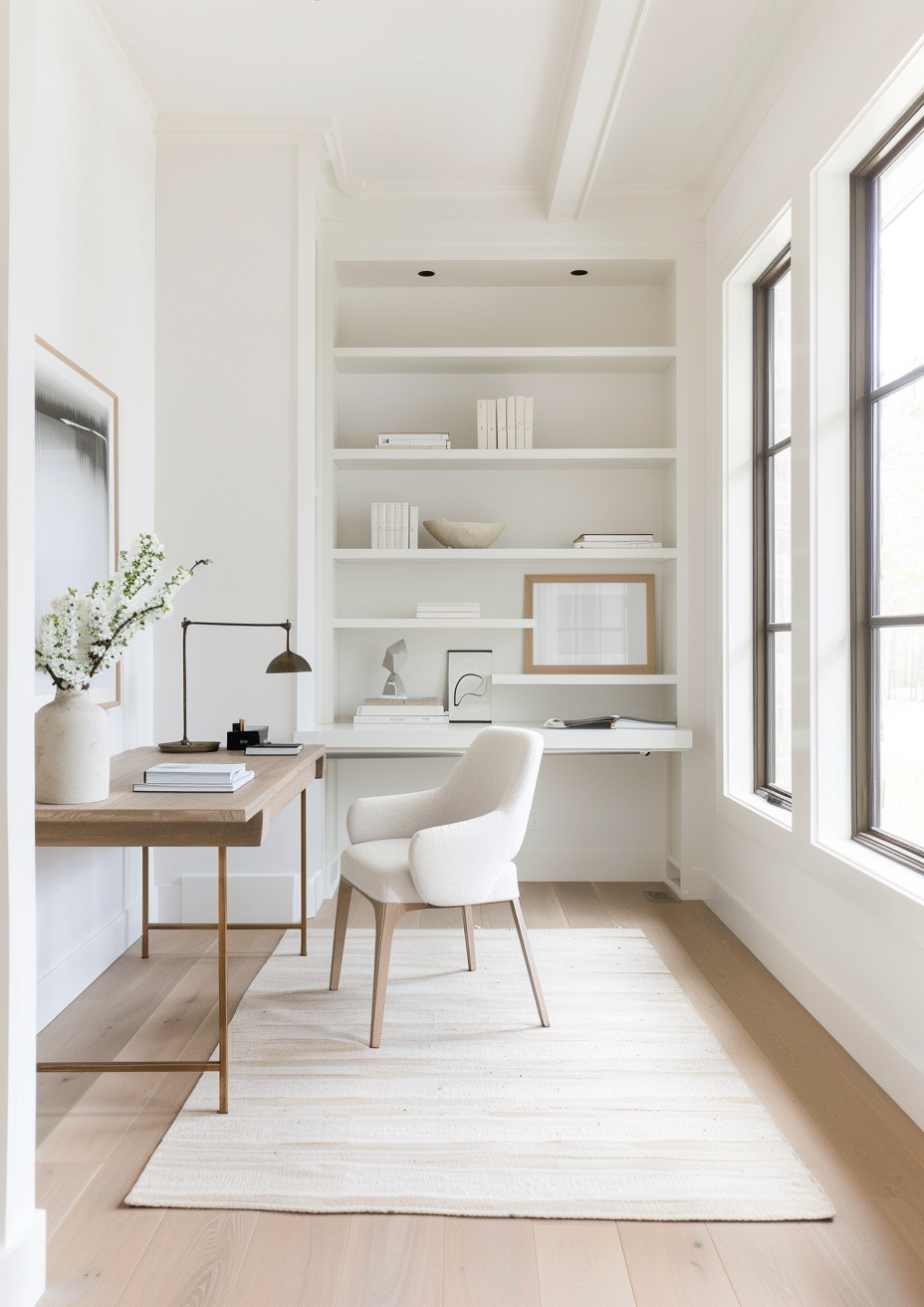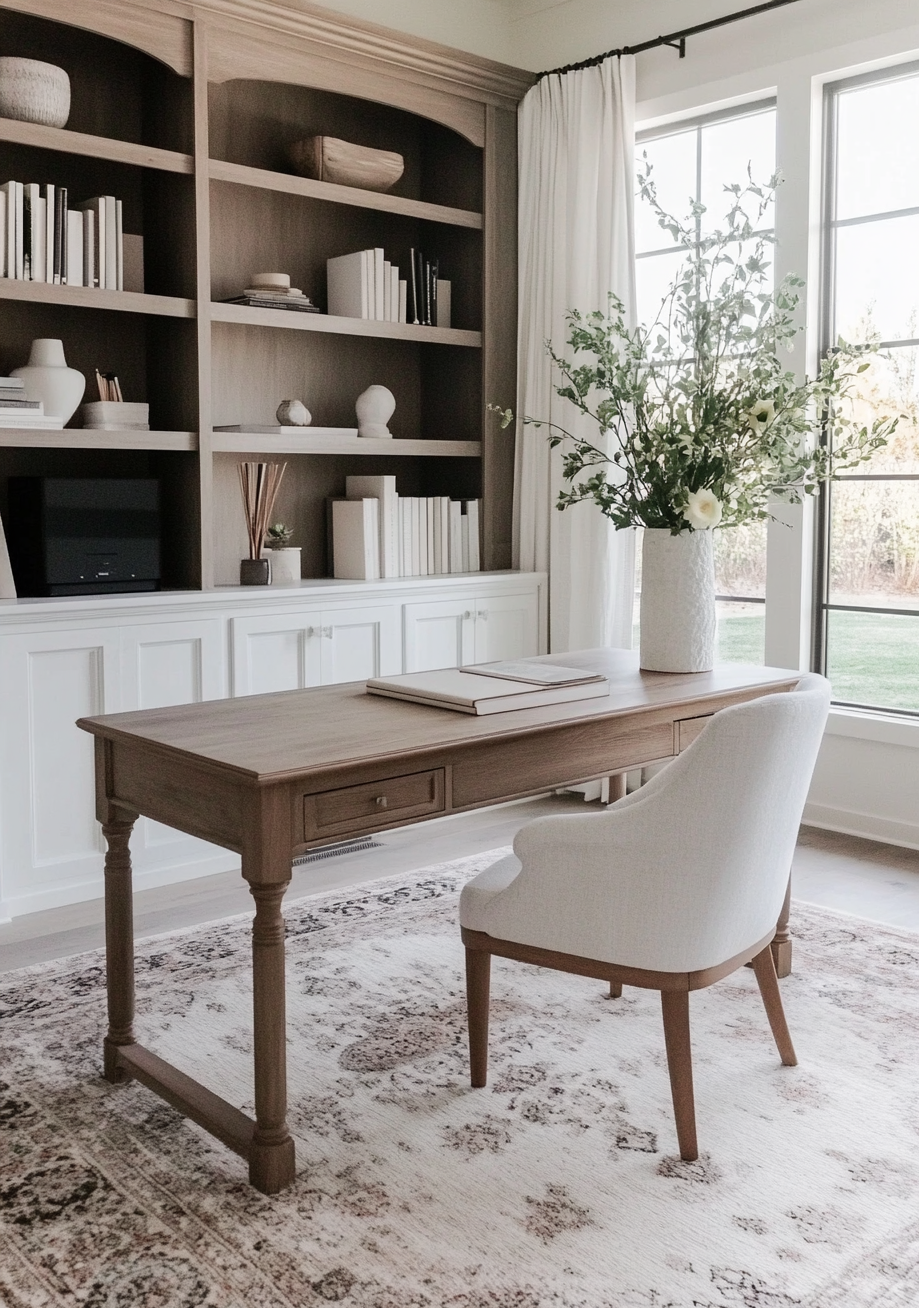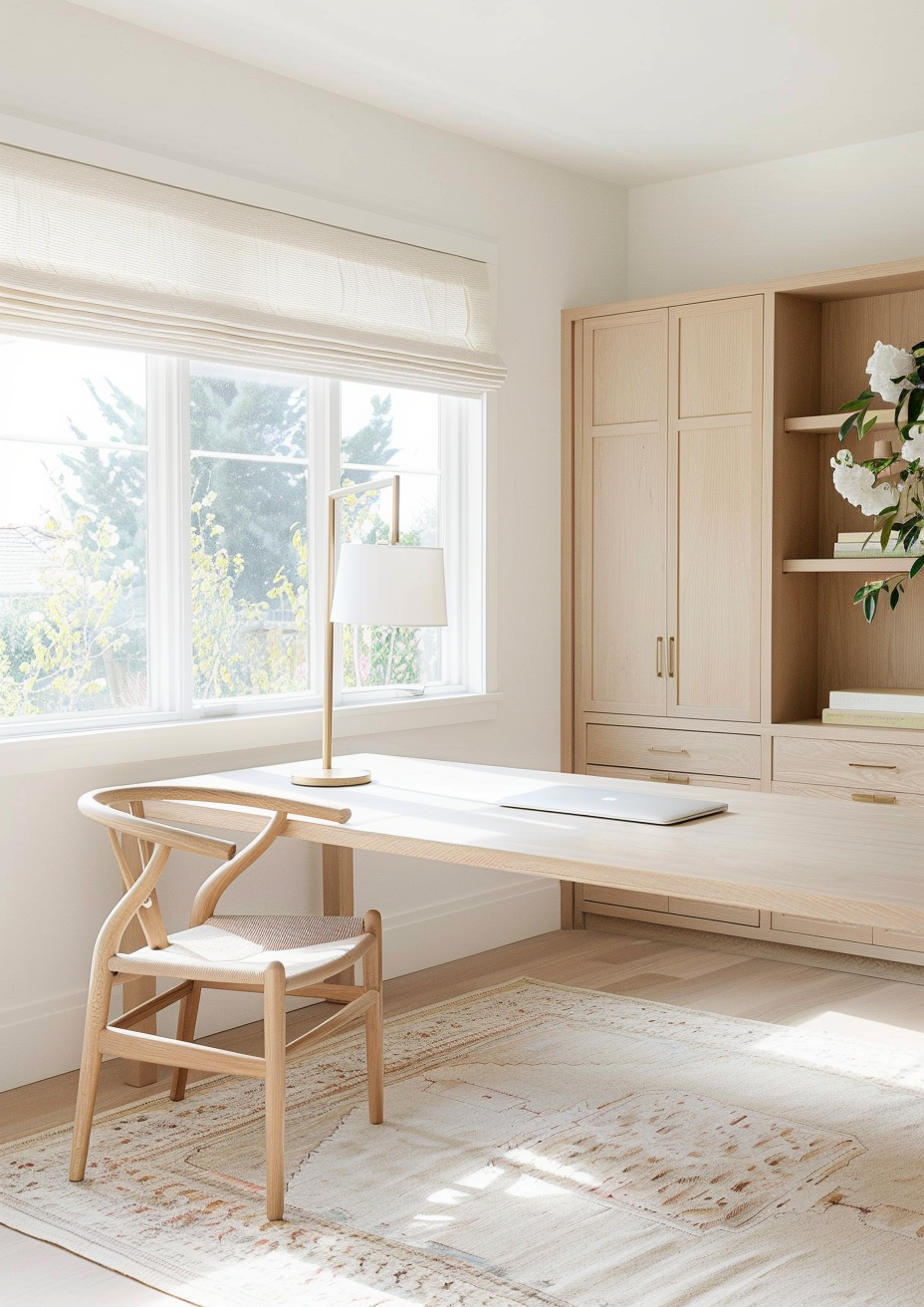How to Set Up a Home Office: 7 Easy Steps for a Perfect Workspace
- Beril Yilmaz

- Mar 12
- 4 min read
Working from home sounds great in theory—no commute, flexible hours, and comfy clothes all day. But in reality? It can be a struggle. Between household distractions, an uncomfortable setup, and the blurred lines between work and home life, your productivity can take a serious hit.
The good news? A well-designed home office can change everything. Whether you’re working with a dedicated room, a cozy corner, or even a small desk in your living space, the right setup can keep you organized, focused, and stress-free. Here’s how to set up a home office that actually works for you.
1. How to Set Up a Home Office: Find the Right Space

Not everyone has an extra room to dedicate to a home office, and that’s okay. What’s important is carving out a space that signals “work mode” to your brain.
If you have a spare room, great! Set it up as your official office and close the door to keep distractions at bay.
If space is limited, consider unused areas like a nook under the stairs, a hallway corner, or even a section of your living room. A small desk or a floating shelf can serve as a minimalist workstation.
If you’re really short on space, a fold-out desk or a laptop tray can instantly transform a dining table or even a closet into a productive workspace.
The key is to choose a spot where you feel comfortable and can focus—away from the TV, heavy foot traffic, and constant interruptions.
2. How to Set Up a Home Office: Invest in the Right Desk & Chair

A proper desk and chair aren’t just about aesthetics—they’re crucial for your health and productivity.
Your desk should be at the right height (typically 28-30 inches from the floor) to avoid strain on your arms and wrists.
Choose a comfortable, ergonomic chair that supports your lower back and encourages good posture. If you’re using a dining chair, add a lumbar pillow for extra support.
If possible, go for an adjustable standing desk or a desk converter so you can alternate between sitting and standing. Movement keeps you energized and reduces fatigue.
A makeshift setup at the kitchen table might work short-term, but for long-term productivity, invest in furniture that supports your work needs.
3. How to Set Up a Home Office: Optimize Your Lighting

Bad lighting can lead to eye strain, headaches, and fatigue. Natural light is ideal, but not always possible.
Position your desk near a window if you can, to get plenty of daylight. Natural light enhances mood and focus.
Add a desk lamp with warm, soft light to reduce glare and shadows. Avoid harsh overhead lights.
Use adjustable lighting so you can change brightness levels depending on the time of day.
If your office setup is in a dimly lit room, consider adding LED light strips or floor lamps to create a well-lit, inviting space.
4. How to Set Up a Home Office: Reduce Clutter & Stay Organized

A cluttered workspace equals a cluttered mind. Keeping your desk tidy helps improve focus and efficiency.
Use storage solutions like shelves, drawers, or filing cabinets to keep papers, chargers, and office supplies out of sight.
Invest in cable management to prevent tangled cords from taking over your desk.
Go digital whenever possible—scan documents, use cloud storage, and minimize paper clutter.
A clean, organized space helps you think clearly and stay productive throughout the day.
5. How to Set Up a Home Office: Personalize Your Space for Comfort

Your home office should be a place you actually enjoy spending time in. Personal touches make a big difference.
Add plants—they improve air quality and boost productivity.
Use color psychology—soft blues and greens promote focus, while warm neutrals create a calming atmosphere.
Hang up inspiring artwork or quotes to keep you motivated.
Your home office should reflect your personality while still being functional and work-friendly.
6. How to Set Up a Home Office: Minimize Distractions

One of the biggest challenges of working from home is staying focused.
Use noise-canceling headphones to block out background noise.
Set boundaries with family or roommates—let them know when you’re working and not to disturb you.
Use productivity apps like Focus@Will or Pomodoro timers to stay on track.
By creating a distraction-free environment, you can maintain better focus and efficiency throughout the day.
7. How to Set Up a Home Office: Create a Work-Life Balance

When your home is your office, it’s easy to overwork. Setting boundaries is key.
Stick to a schedule—start and end work at the same time each day.
Take breaks away from your desk—step outside, stretch, or grab a coffee.
Log off at the end of the day—resist the urge to check emails late at night.
Creating a balance ensures you stay productive without feeling burnt out.
FAQs About How to Set Up a Home Office
Q: What if I don’t have a dedicated room for a home office?A: You don’t need a full room—just a small, dedicated space. Try a corner in your living room, a hallway nook, or even a closet with a fold-down desk.
Q: Do I really need an ergonomic chair?A: Yes! An ergonomic chair supports your posture and prevents back pain. If you can’t get one, use a cushion for lumbar support.
Q: How can I make my home office feel more productive?A: Keep it clutter-free, add good lighting, personalize with decor, and minimize distractions.
Q: What’s the best way to separate work and home life?A: Have a set schedule, take breaks, and “log off” at a specific time each day to maintain balance.
Need Help Designing Your Perfect Home Office?
At BY Design and Viz, we specialize in creating beautiful, functional spaces tailored to your needs. Whether you need a full home office setup or a small workspace solution, our interior and exterior architectural design experts can bring your vision to life.
Contact us today for a consultation and let’s design the home office you’ve been dreaming of!


































